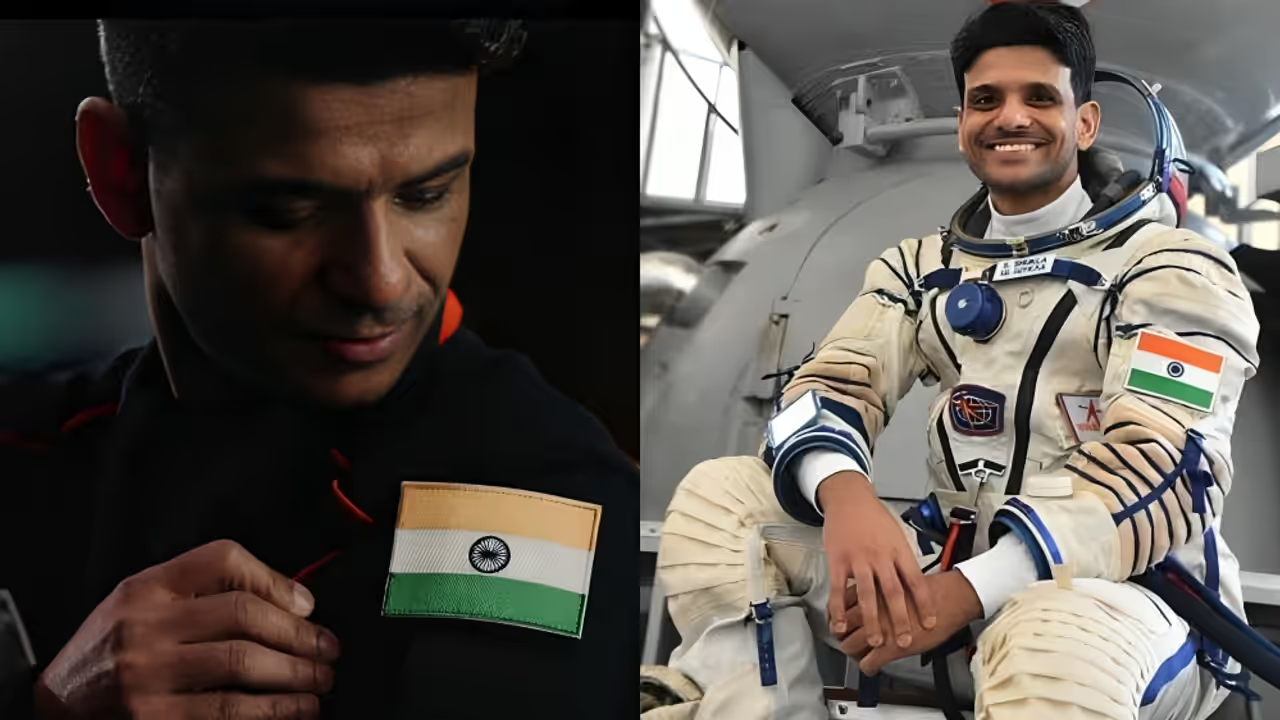The Axiom-4 mission carrying Indian astronaut Shubhanshu Shukla launched from Florida to the ISS for a 14-day stay. The crew will conduct research, share messages of pride, and mark a major step in India’s space journey.
After several delays, the Axiom Mission 4 (Ax-4) finally took off at 12 pm on Wednesday from NASA’s Kennedy Space Center in Florida. The mission is being carried out by Axiom Space in partnership with NASA, ISRO and the European Space Agency.

India’s Shubhanshu Shukla is part of the four-member international crew. They are travelling in a SpaceX Crew Dragon capsule, which was launched using a Falcon 9 rocket. Weather conditions were 90% favourable at the time of liftoff.
Launch to space from historic site
The Axiom-4 (Ax-4) mission took off at 12:01 pm IST on Wednesday from Launch Complex 39A at NASA’s Kennedy Space Center, the same site used for Apollo 11’s Moon mission.
This mission is special for India, as Group Captain Shubhanshu Shukla, a test pilot with the Indian Air Force, is part of the crew. He is joined by Peggy Whitson, Anne McClain, and Nichole Ayers. Their destination: the International Space Station (ISS).
The journey to the ISS is expected to take about 29 hours, with docking planned at 4:30 pm IST on Thursday at the Harmony module’s space-facing port.
Getting ready for launch
Hours before liftoff, the Ax-4 astronauts arrived at the launch pad in their black SpaceX flight suits. They entered the Dragon capsule C213, where they worked with SpaceX and NASA teams for safety checks and system tests.
About 35 minutes before launch, fuel loading began. The Falcon 9 rocket was filled with supercooled liquid oxygen and RP-1 kerosene, its regular fuel. At five minutes to launch, Dragon switched to internal power. All systems had to work in perfect sync for a successful liftoff.
Lift-off and ascent
At the final second, Falcon 9's nine engines fired. The rocket soared into the sky. Just 60 seconds later, it broke the sound barrier. At 57 seconds, the rocket passed through “Max Q”, the point of maximum air pressure.
The rocket continued climbing, and about 2.5 minutes into the flight, the first stage separated and began returning to Earth for a planned landing at sea. The second stage pushed the Dragon capsule further into space.
Dragon reaches orbit
Around ten minutes after launch, the Dragon capsule separated from the second stage. It then opened its nose cone to reveal guidance tools. The capsule reached speeds of over 27,000 kilometres per hour, circling Earth every 90 minutes.
Approaching the space station
The next 20 to 24 hours are spent adjusting the Dragon’s path using small engine burns. It uses GPS, radar, and sensors to align itself with the ISS.
As it nears the station, Dragon stops at specific points to confirm position. At just 20 metres away, laser sensors and cameras guide it in. First comes a soft capture using magnets, then a hard capture to make the seal secure.
Life aboard the ISS
Once docking is complete and safety checks are done, the hatch opens. The four Ax-4 astronauts enter the ISS to begin their 14-day mission.
They will carry out around 60 experiments, including ones linked to diabetes and medical research. Seven experiments were developed by Indian scientists at ISRO.
This mission is not just about science, it is about cooperation, pride, and India’s growing role in space.
Shubhanshu Shukla's message from space
After reaching orbit, Shubhanshu Shukla shared an emotional message with India. In the video, a jovial and emotional Shukla says:
“Namaskar, my dear countrymen! What a ride! We are back in space once again after 41 years. It's an amazing ride. Kamaal ki ride thi, mere saath mere kandhe pe tirangaa hai. We are revolving around the Earth at a speed of 7.5 kilometres per second. The Tiranga embossed on my shoulders tells me that I am with all of you. This journey of mine is not a beginning to the International Space Station (ISS) but to India's Human Space Programme. I want all of you to be part of this journey. Your chest, too, should swell with pride...Together, let's initiate India's Human Space Programme. Jai Hind! Jai Bharat!”
What’s next
The team will stay at the ISS for two weeks. After their mission is complete, they will board the Dragon capsule again and return to Earth, landing in the Atlantic Ocean.
For Shukla and for India, this mission marks the first Indian presence in space after 41 years, and it builds a bridge to India’s future Gaganyaan missions and the larger Human Space Programme.


